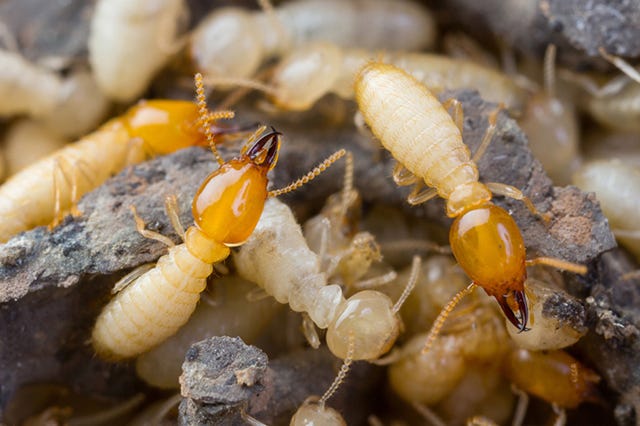The Eco Bed Bug Exterminators Dc Statements
The Eco Bed Bug Exterminators Dc Statements
Blog Article
Getting The Eco Bed Bug Exterminators Dc To Work
Table of ContentsEco Bed Bug Exterminators Dc for DummiesNot known Details About Eco Bed Bug Exterminators Dc Little Known Facts About Eco Bed Bug Exterminators Dc.Some Known Facts About Eco Bed Bug Exterminators Dc.Our Eco Bed Bug Exterminators Dc Statements
Due to the fact that pesticides are harmful, they are likewise potentially harmful to humans, animals, other organisms, and the environment. Individuals that utilize pesticides or on a regular basis come in call with them have to recognize the loved one poisoning, prospective wellness impacts, and preventative steps to reduce direct exposure to the products they make use of. Hazard, or danger, of using pesticides is the capacity for injury, or the degree of danger included in utilizing a chemical under an offered set of conditions.
Nevertheless, applicators can lessen or almost eliminate direct exposure-- and thus minimize hazard-- by adhering to the label directions, using individual protective clothing and equipment (PPE), and dealing with the pesticide appropriately. For example, greater than 95 percent of all pesticide exposures come from dermal direct exposure, largely to the hands and lower arms. By wearing a pair of unlined, chemical-resistant handwear covers, this sort of exposure can be almost eliminated.
The harmful effects that happen from a single direct exposure by any path of entry are termed "intense impacts." The 4 routes of direct exposure are facial (skin), breathing (lungs), oral (mouth), and the eyes. Intense toxicity is identified by taking a look at the facial toxicity, inhalation poisoning, and oral toxicity of guinea pig.
The Definitive Guide for Eco Bed Bug Exterminators Dc
Severe poisoning is measured as the quantity or focus of a toxicant-- the a.i.-- needed to kill 50 percent of the animals in a test population. This action is generally shared as the LD50 (dangerous dose 50) or the LC50 (dangerous concentration 50). Furthermore, the LD50 and LC50 values are based upon a single dose and are tape-recorded in milligrams of chemical per kg of body weight (mg/kg) of the examination animal or in parts per million (ppm).
The reduced the LD50 or LC50 worth of a chemical item, the better its toxicity to human beings and animals. Chemicals with a high LD50 are the least toxic to people if made use of according to the directions on the product label. The persistent toxicity of a chemical is determined by subjecting test animals to lasting direct exposure to the active component.
The chronic poisoning of a pesticide is much more challenging than intense poisoning to establish with lab analysis. Products are classified on the basis of their family member intense poisoning (their LD50 or LC50 values). Chemicals that are identified as highly hazardous (Poisoning Classification I) on the basis of either dental, facial, or breathing toxicity must have the signal words risk and toxin printed in red with a skull and crossbones sign plainly displayed on the front panel of the plan label.
The intense (single dose) dental LD50 for chemical items in this team varies from a trace total up to 50 mg/kg. For instance, exposure of a couple of drops of a material taken by mouth could be fatal to a 150-pound person. Some pesticide items have just the signal word risk, which informs you absolutely nothing regarding the acute poisoning, simply that the product can cause extreme eye damage or severe skin irritation
The Only Guide to Eco Bed Bug Exterminators Dc
In this group, the intense oral LD50 arrays from 50 find more info to 500 mg/kg. A tsp to an ounce of this product could be fatal to a 150-pound person (bed bug spray). Chemical products categorized as either slightly harmful or relatively harmless (Toxicity Classifications III and IV) are called for to have the signal word care on the chemical label

All pesticide toxicity chemicalPoisoning including the LD50, can be found on discovered product's Item Safety Product Safety and security InformationMSDS). Chemical tags and MSDS can be obtained from sellers or produces - https://giphy.com/channel/ecobedbug3xt. The signs and symptoms of pesticide poisoning can vary from a moderate skin irritability to coma or even fatality.
People likewise vary in their sensitivity to different degrees of these chemicals. Some people may show no reaction to an exposure that may cause extreme disease in others (pest control Washington DC). Due to prospective health and wellness problems, pesticide individuals and handlers need to identify the usual indications and symptoms of pesticide poisoning. The impacts, or signs, of chemical poisoning can be generally defined as either topical or systemic.
Fascination About Eco Bed Bug Exterminators Dc
Dermatitis, or inflammation of the skin, is approved as the most typically reported topical impact connected with chemical direct exposure. Some individuals have a tendency to cough, hiss, or sneeze when exposed to pesticide sprays.
This symptom usually subsides within a few mins after an individual is removed from the direct exposure to the toxic irritant. Nevertheless, a reaction to a pesticide item that creates somebody not just to sneeze and cough however additionally to create extreme acute breathing signs is extra likely to be a real hypersensitivity or allergy.
Systemic effects are quite different from topical results. They usually take place away from the initial factor of contact as a result of the pesticide being taken in right into and dispersed throughout the body. Systemic effects commonly consist of queasiness, vomiting, fatigue, migraine, and digestive tract disorders. In sophisticated poisoning situations, the person might experience adjustments in heart rate, trouble breathing, convulsions, and coma, which can result in death.
Report this page